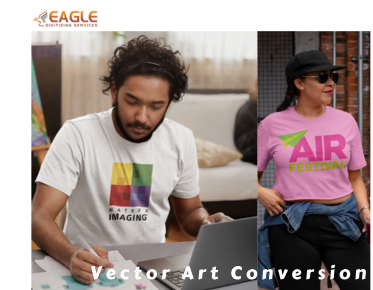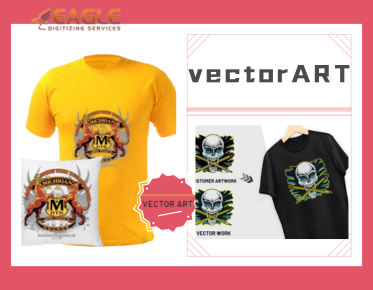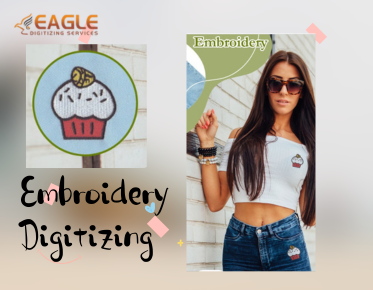How To Turn A Painting Into Vector Art?
Transforming a painting into vector art is a fascinating process that merges traditional artistry with modern technology. This conversion allows artists to preserve their work in a digital format that is scalable and versatile. Whether you're a professional artist or a hobbyist, understanding how to convert paintings into vector art can open up new avenues for creativity and commercial opportunities. In this guide, we'll explore the steps involved in this transformation, the tools you'll need, and some tips to ensure your vector art retains the essence of the original painting. For those looking to delve deeper into vector art, vector images offer a wealth of possibilities.
Understanding Vector Art
Before diving into the conversion process, it's essential to understand what vector art is. Unlike raster images, which are made up of pixels, vector graphics are created using mathematical equations. This means they can be scaled to any size without losing quality, making them ideal for logos, illustrations, and other design elements that require flexibility.
The Benefits of Vector Art
Vector art offers several advantages over traditional raster images. The most significant benefit is scalability. Because vector graphics are not pixel-based, they can be resized without any loss of quality. This makes them perfect for large-scale prints, such as billboards, as well as small-scale applications, like business cards. Additionally, vector files are typically smaller in size compared to high-resolution raster images, making them easier to store and share.
Tools Needed for Conversion
To convert a painting into vector art, you'll need specific software tools. Adobe Illustrator is the industry standard for vector graphics, but there are other options available, such as CorelDRAW and Inkscape. These programs offer a range of features that allow you to trace and manipulate your artwork, turning it into a vector format.
Choosing the Right Software
When selecting software for vector conversion, consider your budget and the complexity of your project. Adobe Illustrator offers a comprehensive set of tools and is widely used by professionals, but it comes with a subscription fee. Inkscape, on the other hand, is a free, open-source alternative that provides many of the same features. For those who prefer a one-time purchase, CorelDRAW is another excellent option.
Steps to Convert a Painting to Vector Art
The process of converting a painting into vector art involves several steps. Here's a detailed guide to help you through the process:
1. Digitize Your Painting
The first step is to digitize your painting. This can be done by scanning the artwork or taking a high-resolution photograph. Ensure that the image is clear and well-lit, as this will affect the quality of the vector conversion.
2. Import the Image into Your Software
Once you have a digital copy of your painting, import it into your vector software. Most programs allow you to simply drag and drop the image into the workspace.
3. Use the Trace Tool
Most vector software includes a trace tool that automatically converts raster images into vector paths. This tool analyzes the image and creates vector shapes based on the colors and lines in the artwork. Adjust the settings to achieve the desired level of detail and accuracy.
4. Refine the Vector Paths
After tracing, you'll need to refine the vector paths. This involves cleaning up any unwanted lines or shapes and adjusting the nodes to ensure smooth curves and accurate representation of the original painting.
5. Add Colors and Effects
Once the vector paths are refined, you can add colors and effects to enhance the artwork. Use the fill and stroke tools to apply colors, and experiment with gradients and patterns to add depth and texture.
Tips for Successful Vector Conversion
Converting a painting into vector art can be challenging, but with practice, you can achieve stunning results. Here are some tips to help you along the way:
Maintain the Essence of the Original
While vector art allows for creative manipulation, it's important to maintain the essence of the original painting. Pay attention to the key elements that define the artwork and ensure they are accurately represented in the vector version.
Experiment with Different Styles
Vector art offers endless possibilities for experimentation. Try different styles and techniques to see what works best for your artwork. You might discover a new approach that enhances the original painting.
Seek Feedback
Don't hesitate to seek feedback from other artists or designers. They can provide valuable insights and suggestions to improve your vector art. Online communities and forums are great places to connect with others and share your work.
Exploring Vector Art Services
If you're not comfortable with the conversion process or simply want to save time, consider using professional vector art services. These services offer expert conversion and can handle complex projects with ease.
Future Trends in Vector Art
As technology continues to evolve, so too will the tools and techniques used in vector art. We can expect to see more advanced software features that make the conversion process even more intuitive and efficient. Additionally, the integration of artificial intelligence in design software could revolutionize the way we create and manipulate vector graphics. As these trends develop, artists will have even more opportunities to push the boundaries of their creativity.
Eagle Digitizing excels in delivering professional vector art conversion services, transforming creative visions into scalable designs. Whether you're looking to convert a painting or explore new artistic possibilities, vector art offers a world of potential.



